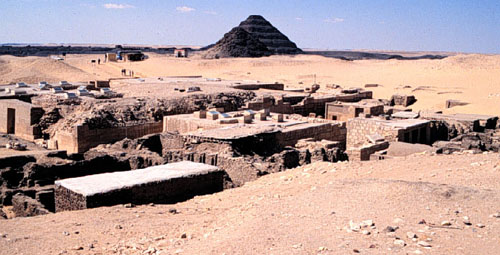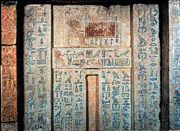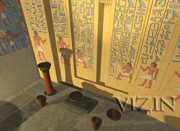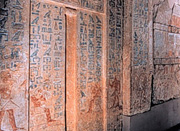The Funerary Chapel of Ka(i)pura Saqqara, Egypt |
A Gem Reset
The ancient Egyptian funerary chapel of Ka(i)pura, only a few meters in size, was erected in the late 5th or early 6th Dynasty, sometime between about 2415 and 2298 BCE, in a necropolis north of the stepped pyramid complex of Djoser at Saqqara. It was completely removed from its site in 1904 and shipped to the United States for exhibition; it is now installed at the University of Pennsylvania Museum of Archaeology and Anthropology. Its exact original location is not known.
View of the Saqqara mastaba necropolis near where the funerary chapel of Ka(i)pura was supposedly found; its original location is now not known; © Denise Doxey |
Grand Accommodations for the Dead
During the Old Kingdom in Egypt (Dynasties I through VI; roughly 3000 to 2130 BCE), the centralized pharaonic government sought to memorialize itself in ever more grandiose royal tombs for its leaders. What began as modest mastabas (Arabic for benches), eventually became vast necropoli with enormous pyramids. The tombs were designed to help the rulers in their transition to the afterlife. Nonroyal wealthy individuals could also build mastabas and tomb chapels of stone, with elaborate wall carvings and cavernous interior chambers, and lavished with memorial grave goods brought to the chapel by friends and family. Each tomb often had a large false door that allowed the spirit of the deceased to travel back and forth between worlds and in front of which offerings were left.click on the images to enlarge
Such a tomb chapel was erected by Ka(i)pura, a high-ranking official in the late 5th or early 6th Dynasty. We know his standing because of the many official titles given after his name on the walls of the chapel. Although already known for decades in a necropolis north of the stepped pyramid complex of Djoser at Saqqara, the tomb was fully excavated only in 1903 by James Quibell.
A Limestone Canvas
The carved wall stones of the chapel, including the huge false door carved from a single piece of limestone-- was removed from its context and shipped for display at the Louisiana Purchase Exhibition (St. Louis, Missouri) in 1904, from where it went to its current location in the University of Pennsylvania Museum of Archaeology and Anthropology.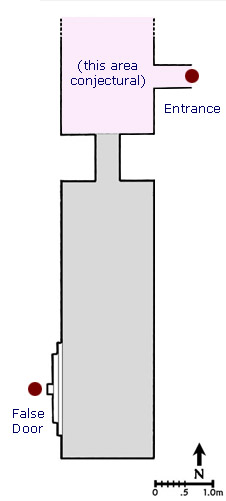 A Single Room
A Single Room
The funerary chapel, in its current form, is a single rectangular room with the false door set into the south end of the west wall (there was most likely a main entry through an intermediary chamber, but only rudimentary indications of that space survive.)
Plan of the funerary chapel of Ka(i)pura showing the location of the false door and the conjectural vestibule and likely entrance from the Saqqara necropolis.
Artist's Rendering
The walls of the main space are covered with inscriptions and carved and painted scenes showing Ka(i)pura among rows of offering bearers, butchering scenes, and row upon row of foods and other goods that were to ensure him a long and prosperous afterlife.| Click and drag the blue slider knob to reveal the original hieroglyphics |
Artist’s rendition of the hieroglyphics on the south wall of the funerary chapel of Ka(i)pura depicting offering bearers and rows of prepared food |
Reference
Page Created: October 31, 2004
Page Updated: October 14, 2009
URL:
Page Author: The Institute for the Visualization of History
